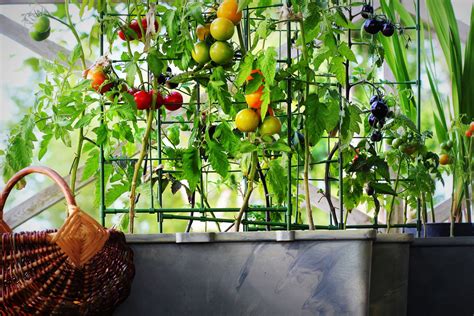Best Vegetables to Grow on Your Balcony for Fresh and Easy Harvests
Growing your own vegetables, even in an urban setting, is a rewarding way to enjoy fresh, homegrown food. With balcony gardening becoming more popular, many people are turning to container gardening to make the most of their small spaces. Whether you’re new to gardening or an experienced green thumb, this guide provides you with everything you need to know about growing easy-to-manage vegetables on your balcony.
Key Concepts in Balcony Gardening
Before diving into the types of vegetables that thrive in urban gardening, it’s important to understand the key concepts that make balcony gardening successful:
- Sunlight: Most vegetables need at least 6 hours of sunlight per day. Make sure your balcony receives adequate sunlight or adjust your planting strategy to grow shade-tolerant vegetables.
- Container Size: The size of your container will determine what vegetables you can grow. Some plants need deep roots, while others thrive in shallower pots.
- Soil: Choose high-quality potting soil designed for container gardening as it retains moisture and provides nutrients for your plants.
- Watering: Containers dry out faster than garden beds. Regular watering is essential, especially during hot weather.
- Drainage: Ensure that your containers have proper drainage holes to avoid waterlogging, which can harm plant roots.
Historical Context: The Rise of Urban Gardening
The trend of urban gardening started as a response to increasing urbanization and the desire for sustainable living. As cities expanded and backyards shrank, people found creative ways to grow their own food in limited spaces. Balcony vegetables became popular as they allowed city dwellers to engage in small space gardening while reaping the benefits of fresh, homegrown produce.
Current State Analysis: Popular Balcony Vegetables
Today, balcony gardening is more accessible than ever, thanks to innovative gardening tips and container options. Below are some of the most popular and easy-to-grow vegetables for balcony gardeners:
| Vegetable | Container Size | Sunlight | Watering Needs | Growing Tips |
|---|---|---|---|---|
| Tomatoes | 12-18 inches deep | Full sun | Regular watering | Use stakes or cages for support |
| Lettuce | 6-8 inches deep | Partial sun | Frequent watering | Harvest leaves as needed |
| Peppers | 10-12 inches deep | Full sun | Moderate watering | Use a balanced fertilizer |
| Carrots | 12 inches deep | Full sun | Consistent moisture | Thin seedlings for better root growth |
| Radishes | 6-8 inches deep | Partial sun | Light watering | Harvest when radishes are small |
| Spinach | 6-8 inches deep | Partial sun | Moderate watering | Cool-weather crop, ideal for spring and fall |
| Green Beans | 8-10 inches deep | Full sun | Moderate watering | Use a trellis for vertical growth |
Practical Applications for Small Space Gardening
When space is limited, maximizing your balcony’s potential becomes crucial. Here are some practical tips to help you succeed:
- Vertical Gardening: Use vertical structures like trellises and hanging pots to grow vining plants such as beans and tomatoes.
- Companion Planting: Grow complementary plants together. For example, pair basil with tomatoes to improve flavor and deter pests.
- Succession Planting: Stagger planting times to ensure a continuous harvest. For example, plant lettuce every 2-3 weeks.
Case Studies: Successful Urban Gardening Projects
Several urban gardening enthusiasts have turned their balconies into mini farms. Here are a few examples of successful projects:
- Case Study 1: Balcony Tomatoes in New York City: A gardener in Brooklyn was able to grow over 30 pounds of tomatoes in a 50-square-foot space using large containers and vertical stakes.
- Case Study 2: Herb and Salad Garden in Chicago: By using shallow containers, a Chicago resident grew an abundance of lettuce, spinach, and herbs on a small, shaded balcony.
- Case Study 3: Container Peppers in San Francisco: In a sunny area, a gardener successfully grew bell peppers and hot peppers in medium-sized containers, producing enough to share with neighbors.
Stakeholder Analysis: Who Benefits from Urban Gardening?
Balcony gardening has a broad range of stakeholders:
- Urban Dwellers: Benefit from fresh, organic produce and a connection to nature.
- Environmentalists: Support a reduction in the carbon footprint associated with transporting vegetables.
- Local Communities: Can create a sense of shared purpose and enhance food security.
- Governments: See the potential for urban gardening to contribute to public health and sustainability goals.
Implementation Guidelines for Balcony Gardens
Starting a balcony garden is easier than you might think. Follow these steps to get started:
- Assess Your Space: Measure the sunlight, space, and weight limits of your balcony to choose the right plants.
- Select Containers: Choose pots or containers that match the needs of your selected vegetables.
- Prepare the Soil: Use a well-draining, nutrient-rich potting mix designed for container plants.
- Plant and Care: Follow the spacing, sunlight, and watering needs for each type of vegetable.
- Monitor Growth: Regularly check for pests, water needs, and prune as needed to encourage healthy growth.
Ethical Considerations in Urban Gardening
While balcony gardening is generally sustainable, ethical considerations include:
- Pesticide Use: Opt for organic or natural pest control methods to avoid harmful chemicals.
- Water Conservation: Use drip irrigation or rainwater collection to minimize water waste.
- Community Impact: Consider sharing excess produce with local food banks or neighbors to reduce food waste.
Limitations and Future Research
Despite the many benefits, balcony gardening has limitations. Small spaces restrict the variety and quantity of crops that can be grown, and weather conditions may pose challenges. Additionally, future research could explore advanced techniques like hydroponics and vertical farming to further enhance urban gardening’s potential in densely populated areas.
Expert Commentary
Experts agree that container gardening offers a viable solution for those looking to grow their own food in limited spaces. According to urban gardening expert Jane Doe, “The beauty of balcony gardening lies in its accessibility. Anyone with a small outdoor space can cultivate fresh, organic produce.” As balcony gardens continue to rise in popularity, we can expect innovations that will make this method even more efficient and rewarding for city dwellers.


